6 Proven Ways to Boost Your Email Captures

Your email list is a modern digital currency.
Behind each contact is a potential lead, and within that lead is the opportunity to generate revenue. People today are more cognizant to a marketer's ambitions; they understand the tangible repercussions of giving away their email, and that makes "contact building" a complex and tedious process.
It's going to take a compelling strategy in order to consistently grow your email list; something that is persuading and hard-hitting, yet modest and unobtrusive that assures people giving you their email address serves their best interests.
Following are six tips and tricks you can use to build your email contacts list, and revitalize your 'lead magnet' arsenal.
1.) Ask for Emails and Give Video in Return
The "book was better than the movie" theory may be true if we're talking about "The Lord of the Rings" or "Harry Potter," but when it comes to marketing, this is usually never the case.
People, for the most part, will prefer a 1-2-minute video on your product than spending a couple minutes on an article about your product.
There is a reason 300 hours of video content is uploaded to YouTube every 60 seconds: People like to watch things. There's just something alluring about video content that persuades people to watch.
If you think your business doesn't fall into the "video type," think otherwise; there are endless ways to communicate your product.
Whether it's a tour of the office, quick demo of your product in-use, customer testimonial, or sharing knowledge of your industry expertise-video content is a powerful mechanism for collecting emails.
Check out how location-based marketing service, Turnstyle, seamlessly captures emails before giving video content about its offering. 
2.) Engage Interest with a Hard-Hitting Case Study
People love a great story - especially if that story relates to the goal of your target audience.
Case studies are many times the deciding factor of whether or not a lead becomes a sale. It gives you an opportunity to bring validation into your work, while painting the "after-purchase" transformation of your product with tangible data.
Case studies essentially explain what you did rather than what you can do.
Legitimacy and results serve as two of the most important aspects in persuading someone to make an investment, and interested customers will be more than willing to sacrifice their email in return of this coveted information.
However, in order for capturing emails via case studies to work, you're going to need a hard-hitting headline that clearly supports your value proposition.
For example, if you're an SEO marketing agency that specializes in website conversions, you might temp people with a case study entitled: "How we were able to increase returning visitor conversion rate by 400%."
3.) Give 'Em a Taste of Your Writing
People love free stuff.
It's simply a part of our modern-consumer chemical make-up.
If you've taken the time and effort of spotlighting your wisdom in the form of a book, why not make use of your novelist prestige as a lead capturing opportunity?
Simply allocate 1-2 chapters from your book in PDF format, promote it on social media or your website, and watch a swarm of curious-to-learn individuals happily hand over their emails.
Take a look at how social media marketing megastar, Gary Vaynerchuck, informally encourages his followers to sign up for a "taste" of two free chapters: 
4.) "An Investment in Knowledge Pays the Best Interest" - Benjamin Franklin
Everyone wants to be in the "know."
Our thirst for learning is at a constant state of growth. Knowledge is what differentiates us from others, altering our perception of "why things are the way they are," while making clearer of "how things came to be."
If you hold the key to information you deem valuable for your target market, why not harness your insight to its fullest potential?
Give your audience something they want to hear.
Practical and attainable advice they can implement into their lives right away. Growth hacking and, productivity tools work wonders, as do survey results on internal studies, how-to article/guides and best practices.
Ask yourself what content you would want to learn about.
By removing the "how do I grow my business" mindset, and replacing it with the "what information would engage my curiosity" approach, you remove the money-oriented predisposition, and replace it with a selfless, helpful business focus.
Salesforce provides a good example of how powerful forgoing the "sale" in replace of spreading "insight" tempts website visitors to take action: 
5.) Leverage Video Annotations and Links on YouTube
With over one-third of all Internet users on YouTube, it's surprising how frequently common it is for marketers to fail to leverage the mega-social site properly.
One of YouTube's most effective and easiest ways to create business-generating opportunities and capture emails is to feature a link or video annotation within the frame of a video.
Timing and relevance is particularly important in this strategy.
For example, let's say you're a hospitality marketer showcasing the new tiki pool bar recently added to a hotel.
You wouldn't want to pop-up a link reading "reserve your spot in our newest tropical lagoon today" at the beginning of the video, when the bar is shown being constructed. Seconds after displaying the final product would most likely be the strongest place to feature this particular link.
Take a look at how second-language learning software, Rosetta Stone, displays their video annotations in correlation with their "after-purchase" transformation. 
6.) The Non-Hostile Solution for Demanding Contact Info
There is something exceptionally irritating and invasive about shoving a pop-up window in your face two-seconds after pushing enter.
With the right value proposition and graphic design, the strategy can certainly work in the marketer's favor, and there are countless stats which support this.
However, if instant pop-up windows aren't your cup of tea, the next-best-thing strategy is to implement a subscribe box or CTA at the end of your page or content.
Sure, this strategy relies heavily on your ability to maintain the interest of your visitor, but the end-result can prove dramatically effective.
Besides it being a politer and subtler way to ask for someone's email, it also supports the confidence you have in your product-seeing as though you're willing to take the "harder route" of capturing contact info.
It doesn't need to be complex; however, it's important the content leading into the subscribe box is hard-hitting and valuable enough to compel people to opt-in.
Take a look at how marketing guru Neil Patel promotes his website evaluation software, Crazy Egg, at the end of his "About us" page: 
About the Author
Alex Weinbaum is a content marketing specialist at MioDatos, a global leading provider of synchronized channel marketing services. MioDatos provides businesses with a robust, automated platform for creating, scheduling and distributing co-branded digital marketing material for channel partners.




-3-1-1-1.jpg)





